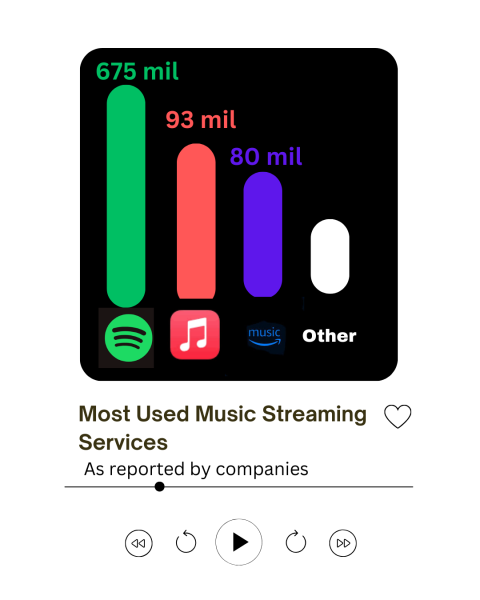Philanthropists Aren’t As Generous As You Think
Living in Libertyville, it is easy to forget that we live in a world of haves and have-nots. At times, I too am guilty of failing to recognize the true magnitude of the economic disparity that exists within the United States.
According to the Federal Reserve’s Distributional Financial Accounts, the top 1 percent of the population possessed 32.2 percent of the wealth in 2019, whereas the bottom 50 percent only controlled 1.6 percent. The pooled wealth of the three wealthiest people, Jeff Bezos, Bill Gates and Warren Buffet, is greater than that of the entire bottom 50 percent.
It is difficult to fathom how, together, three individuals could possibly be richer than half of the U.S. population combined. As a result, seeing the incredibly wealthy involving themselves with philanthropic initiatives tends to provide reassurance. We get it in our heads that perhaps work is being done to use that wealth in a positive way. However, when one looks beyond the surface, it becomes evident that the exact opposite is often true.
“Philanthrocapitalism” is a term coined to describe the increasingly prevalent practice of combining philanthropy (charitable giving) and capitalism (a system that advances businesses and individual economic interests). The intersection between such seemingly contradictory ideas raises the question, how can the two possibly work simultaneously?
The answer is that more often than not, they do not. Charitable and profit-oriented mindsets cannot effectively be exercised at the same time without one being compromised at the expense of the other. Unsurprisingly, the results are skewed to favor the billionaires with exorbitant amounts of power.
It is true that tangible good can be done by organizations like the Bill and Melinda Gates Foundation. When the right resources are mobilized using business-like models, invaluable causes such as global health and environmental protection can be supported.
However, on the other side are people like the Sackler family. While they attached their name to institutions like the Metropolitan Museum of Art and the Guggenheim Museum, the Sacklers were also in charge of Purdue Pharma, the manufacturer of the pain-relieving drug at the center of the opioid epidemic, OxyContin.
It is no coincidence that until lawsuits alleging that Purdue helped cause the opioid crisis arose, the Sackler name was only prominent within the spheres they wanted it to appear.
Meanwhile, as New York Attorney General Letitia James said in December, the Sacklers were removing money and earning billions in profits even as “Purdue’s OxyContin was directly causing countless addictions, hundreds of thousands of deaths, and tearing apart millions of families.”
The Sacklers’ positive contributions to the arts acted as a facade, covering up their more controversial—and exceedingly lucrative—practices. One family was able to cause immense harm while flying under the radar for years. It is frightening to think what others could do with the same amount of power.
In addition to reputation cleansing, “charitable” giving has several other benefits for those seeking personal gain. Donor-Advised Funds (DAFs) allow donors to put money aside into an account, receive the largest possible tax break, and keep money there indefinitely before any is granted to charities. This is obviously problematic for a number of reasons, and ironically, even the Internal Revenue Service recognizes this.
An informational page on the IRS’s website acknowledges that at times, DAFs “appear to be established for the purpose of generating questionable charitable deductions, and provid[e] impermissible economic benefits to donors.”
Regardless, this loophole still remains viable for exploitation. In theory, creating incentives for the ultra-rich to contribute their funds to helping the less fortunate seems mutually beneficial. However, a lack of transparency means that the power accompanying large sums of money can have equally large consequences.
If we continue to take donations at face value, we fail to understand their true costs. While it is much more convenient to merely see the narrative being painted for us, the absence of public scrutiny accompanying these issues is part of the reason they exist at all.
Given the increasing popularity of philanthrocapitalism in the area of charitable giving, I urge you to dig beyond the surface. Although such deep-rooted problems cannot be solved immediately, building awareness is the first step towards accountability. Especially as we enter a presidential election year with billionaire candidates on both sides, it is more important than ever to be cognizant of people’s practices inside and outside of the public eye.










